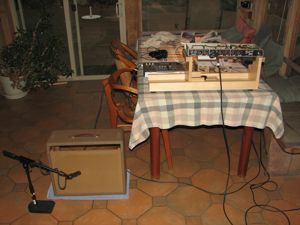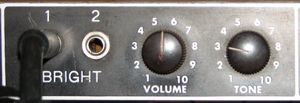Output Transformer Shoot-out!
Recently a customer brought me a beautiful 1962 brown Fender Deluxe that had weak output and ugly sound. Upon checking it over, I found that the output transformer was partially shorted. By lucky coincidence, I had three different brands of replacement transformers on hand that I had accumulated over the years. They ranged in price from less than $30 (US) to more than $130. It seemed like a perfect opportunity to compare them in a great classic amp. So that's what I did, with some help from my wife and a friend who's a better guitar player than I am.

I'm a skeptical guy in general, and I'm especially skeptical when it comes to listening tests of audio gear. In most cases, the listener knows in advance what kind of equipment he's going to be hearing, and it's impossible for people to ignore that knowledge when forming an opinion. Confirmation bias is real, and we see it all the time in equipment reviews that spout absurdities like, "Thanks to the 100% platinum power cord, the highs sparkled with a jewel-like clarity and articulation surpassing anything this reviewer has ever experienced."

Wanting to avoid that kind of nonsense, I did my best to set up the test as a true double-blind experiment—one in which neither the researcher (me) nor the subject (whoever is listening) knows which unit he is evaluating. I cut identical sets of color-coded wires and connected each set to a transformer using a eurostyle terminal strip. Then I found a cardboard box large enough to hold all three transformers, and made three small holes in its side for the leads to pass through. I enlisted my wife to place the transformers in the box in a random order with their leads sticking out through the holes, after which she sealed the box. I numbered the lead sets 1-2-3 from left-to-right. Earlier, I had soldered similarly color-coded leads to the appropriate places inside the amp chassis and terminated them in another eurostyle terminal strip. With this arragement, I could switch from one transformer to the next very quickly.
NOTE: If you try something like this, PLEASE remember to power off the amp and discharge its capacitors each time before you change the connections. The primary leads of the output transformer have the full, lethal B+ voltage on them.

I cabled the amp to the speaker in its cabinet and set up a Shure SM57 aimed at the edge of the speaker's dust cap. The microphone was connected to a Boss BR-864 digital recorder. After my guitar player buddy set the amp controls to his satisfaction, I dialed in the record level and started the recorder. From that point on, we didn't touch the amp or guitar knobs. The recorder was set to record dry, of course, without any added EQ or effects.
The guitar player played the same sequence of chords and licks for each output transformer on a made-in-USA Fender Telecaster. He used both the bridge and neck pickup settings, switching pickups at the same point in each test.
Here are the recordings:
Which one do you like best? Choose one below to reveal the makes, models, and prices of the transformers.
Copyright © 2015 John D. Polstra. All rights reserved.